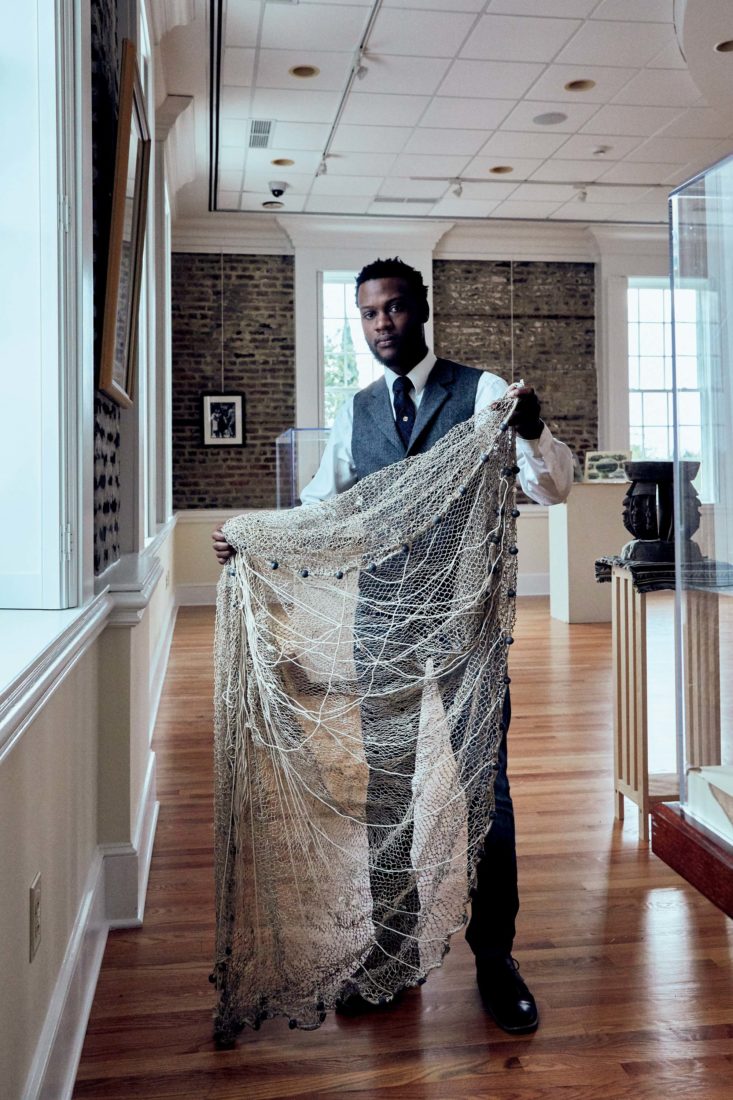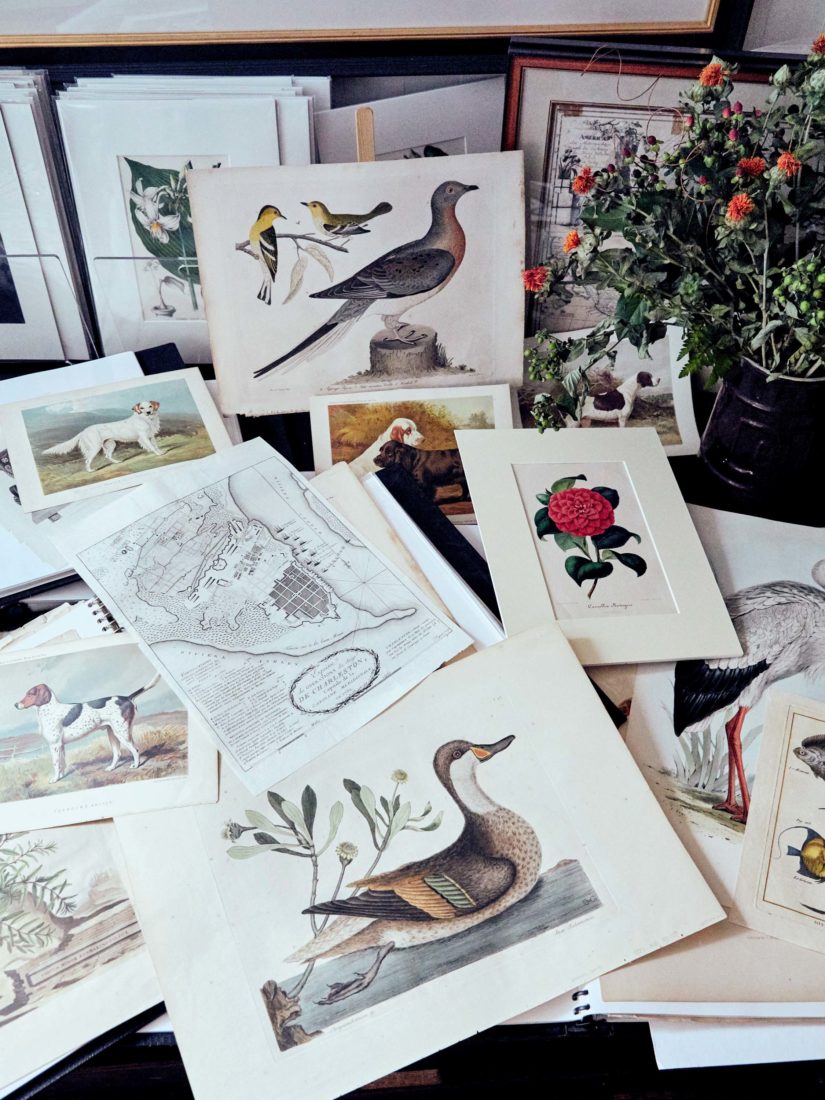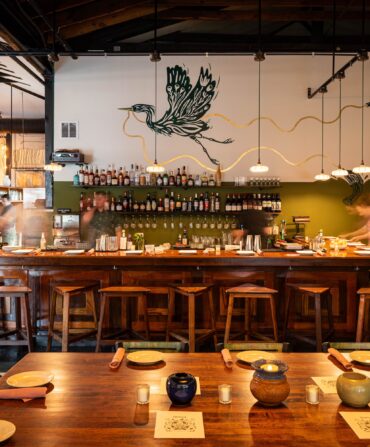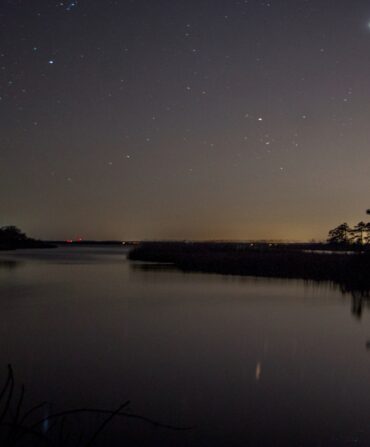Not long after its founding in 1670, Charleston was already a destination for artists and art seekers. In the 1700s, the seaport was the first place in America where artists painted masterful portrait miniatures on thin slices of ivory—mementos kept close in lockets and pockets. A collection of these prized tiny works is the focus of an entire gallery room at the Gibbes Museum of Art. The 1905 Beaux-Arts building serves as a repository for many of the city’s art treasures, including works by the South Carolina–raised pop-art icon Jasper Johns, Charleston-based figurative and still-life artist Jill Hooper, and sweetgrass basket artisan and MacArthur Fellow Mary Jackson. Special exhibitions this year include a private collection of British sporting art, and paintings and sculptures from Southern women artists spanning six decades.
For a glimpse of what the next generation of Charleston artists are up to, Redux Contemporary Art Center houses thirty-eight studios where emerging artists create and collaborate. Visitors can view an ongoing lineup of gallery shows, go to quarterly open-studio events, or register for a one-night class in embroidery or watercolor painting. And near the downtown landmark Marion Square, the Halsey Institute of Contemporary Art at the College of Charleston is known to mount some of the most adventurous and experiential work in the region—Japanese artist Motoi Yamamoto once spent a couple of weeks creating an intricate temporary labyrinth of sea salt across the gallery floor.

While Charlestonians (and the country) eagerly await the debut of the International African American Museum, projected for late 2021, the College of Charleston’s Avery Research Center for African American History and Culture reopens this year following a nearly three-year renovation. Visitors joining daily tours of the former school for African Americans, which held classes from the 1860s to the 1950s, can see a historic classroom and the top-floor auditorium used for civil rights meetings in the 1960s, along with rotating exhibits from Avery’s extensive archives. “Without learning the history,” says exhibit curator and historian Daron Lee Calhoun II, “we would never know where to go in the future.”
Though the art of jazz has a rich history in Charleston, it’s been something of a moving target. But nights of swing-sultry music can now reliably be had at Forte Jazz Lounge, opened last summer. Forte serves wine and beer, but owner Joe Clarke, himself a jazz pianist and bandleader, keeps the focus firmly on the music in the boxy 120-seat listening room, complete with black velvet couches by the stage.
Throughout Charleston you’ll find a mix of new work mingling with the city’s history. Street artist Shepard Fairey grew up in the Lowcountry, and in recent years, a number of public murals by him and others have cropped up along King Street. Meanwhile, over on Church Street you can step inside the circa-1809 Dock Street Theatre for a peek at the grand foyer and historic stage. Springtime audiences can catch performances of Bright Star, Steve Martin and Edie Brickell’s bluegrass musical set in North Carolina.
A few blocks away on Broad Street, take a casual art walk to collector-worthy galleries within steps of one another. The George Gallery houses work from a number of modern artists, including the abstract expressionist William Halsey, the Halsey Institute’s namesake and a pioneer in the Southeast, while at Helena Fox Fine Art, you can take in Savannah native West Fraser’s panoramic Lowcountry landscapes and the oyster-shaped links of necklaces by Charleston silversmith Kaminer Haislip. A few doors down sits Dog & Horse Fine Art, where gallery owner Jaynie Milligan Spector curates (not surprisingly) an array of canine- and equine-themed work. You can even commission a portrait miniature of a beloved spaniel or pointer, in a style reminiscent of those centuries-old human portraits at the Gibbes, to be incorporated into a pendant or a bracelet. And just a few blocks away, Horton Hayes Fine Art showcases gorgeous landscapes, still lifes, and more that evoke life in the Lowcountry.

Amid a clutter of leaning, framed works, Carolina Antique Maps & Prints might be one of the most Charleston places in Charleston. The shop houses a trove of engraved botanical and natural history prints—camellias, fish, birds—along with antiquarian maps and original sketches and watercolors of early-twentieth-century Charleston by the artist Alfred Hutty. Its current owner, Laura Vardell, has helped cultivate the shop’s collection since 1985, including colorful engravings by the English naturalist Mark Catesby, who spent years exploring the region in the early 1700s. “Catesby wasn’t a trained artist,” Vardell says, “but he sure knew how to paint.”
Vardell takes the long view of Charleston’s artistic output—the new galleries and work continually adding to the centuries of what’s been created. So it is in Charleston, where art seekers still come to find their own little piece of Lowcountry beauty.








